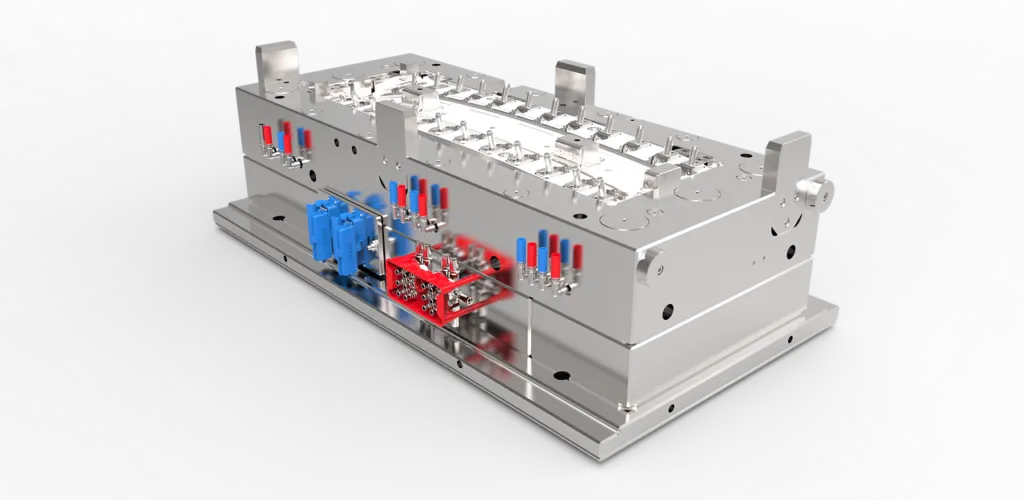
Injection mold tooling is the process of designing and manufacturing equipment to reliably and inexpensively produce high quality plastic parts. Given the complexity of modern mold tooling, this process requires a high upfront cost before any quantity of product can be manufactured. However, the per-part cost following the tooling process can be minimal compared to other processes, and injection molding allows for more features than virtually any manufacturing process. Injection mold tooling is often a good investment for products with manufacturing volumes of 1,000 or more.
Many of the plastic objects we encounter in our day-to-day lives are produced using injection molding. For new product owners who (rightly) want to emulate other products they know, the large investment associated with injection mold tooling can be frustrating. After all, why should it cost so much to produce the same things we buy and use for so little?
It’s important to note the goal of injection mold tooling: to create plastic parts as quickly, efficiently, and with as much uniformity as possible. Several things have to happen here:
Each one of the above functions presents unique challenges for any different part; therefore each mold tool must be custom designed. The engineers who do this work are dedicated specialists known as Mold Designers. Following design, the tool is manufactured in a similarly dedicated facility. Steel is the common material choice for injection mold tools, as the device must withstand the temperature of the hot plastic. The steel “mold bases” are cut by skilled machinists to the engineer’s designs.

An example rendering of an injection mold tool. Mold tools vary in size and complexity depending on the size and complexity of the part and the resin material they are intended to mold.
Ultimately these giant steel devices are much larger than the plastic parts they’re used to make (especially if they’re designed to mold multiple parts at once). They can easily weigh over a ton- so moving them from factory to factory is often impractical. Costs for injection molds vary depending on part size, part complexity, and cavity numbers. For even the smallest, simplest parts, you should be prepared to invest at least $5,000 in tooling. Tooling for larger parts can easily fall in the 6-digits.
So why is it worth it for a product owner to invest so much time and money into a giant piece of steel that’s usually trapped in a far away factory? Because it’s usually more optimal than the alternatives. When the mold is run, it can make a new part every few seconds. This means the per-part cost after tooling can easily be a few dollars or less. Furthermore, molding can produce more complex parts, with more useful features than virtually any manufacturing process. It can be tempting to opt for a fabricated or machined part over molding to avoid the tooling cost, but the economies of scale for these processes do not compare. Where manufacturing volumes exceed 1,000, the tooling costs for injection molding will very quickly be made up for compared to these other processes.
Given the complexity of injection molding, there are lots of important rules and factors to consider when designing parts for this process. As powerful as it is, the process has limitations. Choosing a product designer who knows these limitations can mean the difference of tens of thousands in tooling costs. I learned these rules directly from the Mold Designers while I worked in an injection mold tooling factory, and my team and I consider these factors carefully in every project.